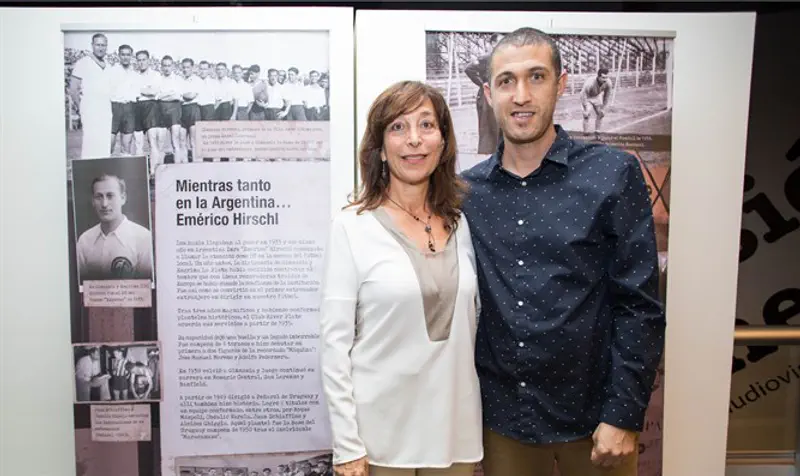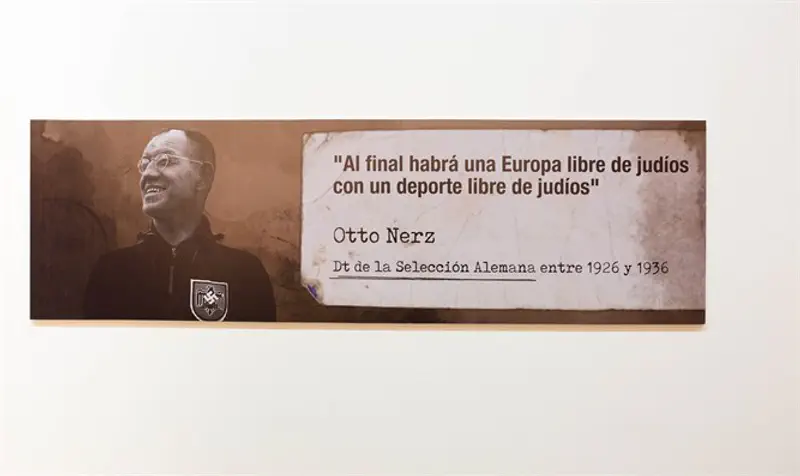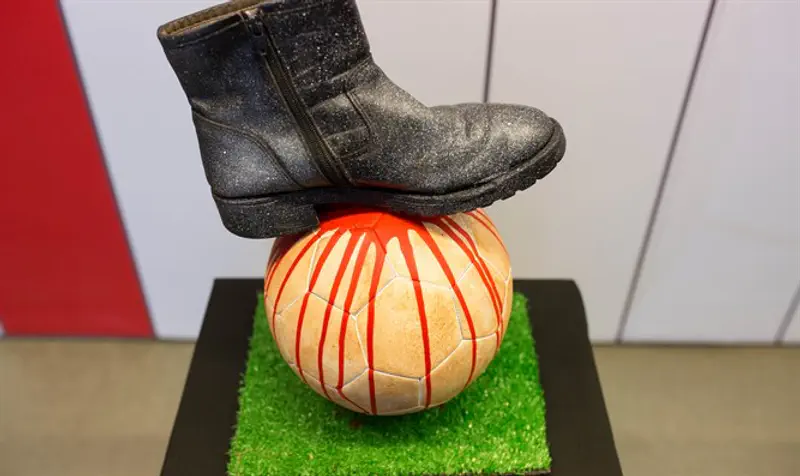
One of Argentina’s most popular soccer clubs is hosting an exhibition of harrowing stories about the sport from the Holocaust era.
“It Wasn’t a Game” (or “No Fue un Juego”) opened last week at the River Plate museum in the team's stadium building complex, and will remain on view through May 15, a month before the start of the World Cup, soccer's premier international tournament. The curators have split the exhibit into 11 parts -- one for each player on the field at one time for each team.
In an exhibit produced by the Buenos Aires Shoah Museum, panels tell the stories of teams and individuals throughout the museum, which receives some 25,000 visitors each month.
One is about Emerico Hirschl, a Hungarian Jewish coach who led River Plate to multiple national and international championships in the 1930s. Hirschl also was instrumental in helping Jews who did not have visas gain asylum in Buenos Aires at the time, despite the prohibitions of the Argentine government. Using his popularity, the coach convinced guards to allow people to enter the city’s ports.
Gabriela Hirschl, his daughter, told JTA at the exhibit’s inauguration that one of the Jews he saved later became his girlfriend, then his wife — and eventually Gabriela’s mother.
There are also the stories of European teams that suffered under the Nazis and were forced to rebuild after the war, such as Bayern Munich and Borussia Dortmund in Germany, Ajax in Holland and Austria Wien in Vienna. Some notable examples: Bayern Munich’s president, Kurt Landauer, and coach, Richard Kohn, were forced to resign because they were Jewish. And an Ajax player, Eddy Hammel, helped the club win multiple championships before he was deported to Auschwitz in 1943.
The exhibit also looks at teams on the other side: Schalke 04, for instance, was taken under Hitler’s wing and coasted to several German championships in the 1930s.
One panel illustrates how the Nazis set up a soccer league at Theresienstadt to fool the Red Cross into believing life was normal at the concentration camp. The Nazis scheduled matches, assembled crowds and took photos, all for propaganda purposes.
There are also tragic stories of many players, such as Julius Hirsch, the first Jew on the German national team. He also fought for Germany in World War I, but later died in Auschwitz. Matthias Sindelar was a non-Jew on the Austrian national team, but he refused to play for Germany after it annexed Austrian territory and forced its players to suit up for the German national team in 1938. Six months later Sindelar was found dead in his apartment. Antony Liko, who played for the Wisla Krakow club, joined and fought with the Polish resistance, but was captured and later killed in Auschwitz.
The exhibit is the brainchild of the Jewish Argentine sports writer Leandro Albajari, who has been interested in the Holocaust since he read “The Diary of Anne Frank” as a 13-year-old. Researchers Gustavo Asmus, Guillermo Ibarra and German Roitbarg assisted in the effort.
“We want to spread to soccer fans a history rarely told in Argentina and expand knowledge about events that took place during Nazism and its direct consequences that led to the Shoah,” Albajari told JTA.
River Plate President Rodolfo D’Onofrio and the president of the Buenos Aires Shoah Museum, Marcelo Mindlin, inaugurated the exhibition. Part of the exhibit will be featured at the museum when its renovated facilities open next year.
The World Cup, a quadrennial event, is being hosted this year by Russia.


